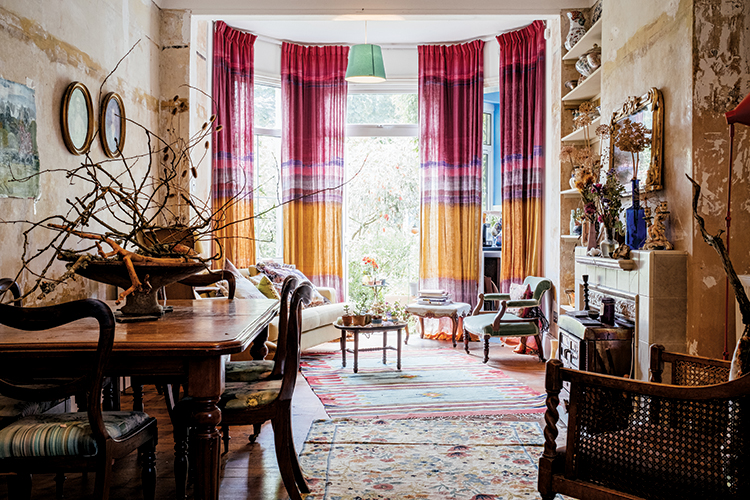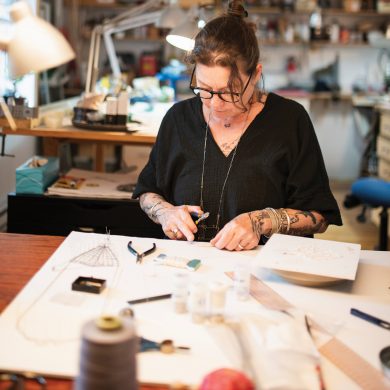
The house has a feeling of history; walls have been stripped back to reveal fragments of its past, there’s been no plan, and it has all developed organically in a very personal way. It was stuffed full when I inherited it 20 years ago, and I’ve just kept the things I like. That includes a few family treasures from a colonial past on my mother’s side and the kitchen table from my grandfather’s house, where, as a small child, I listened to tales of snakes in the Sudan, fighting in the trenches, the north-west frontier of India. That has given me a strong sense of history. On my father’s side, we are descended from Huguenot silk weavers fleeing religious persecution in 17th century France, and my grandmother worked in a cotton mill in Lancashire. I’m proud I have textiles woven into my blood.
It looks like you’re out of free articles.
Become a Women Create member to read this full article.
Already a member? Sign in

Monthly Membership
- Unlimited access to the Women Create website
- Monthly Maker Moments livestreams, members-only newsletters and more

Annual Memberships
- Unlimited access to the Women Create website
- Print and digital subscriptions of WHAT Women Create magazine, WHERE Women Create magazine, or both
- Monthly Maker Moments livestreams, members-only newsletters and more







